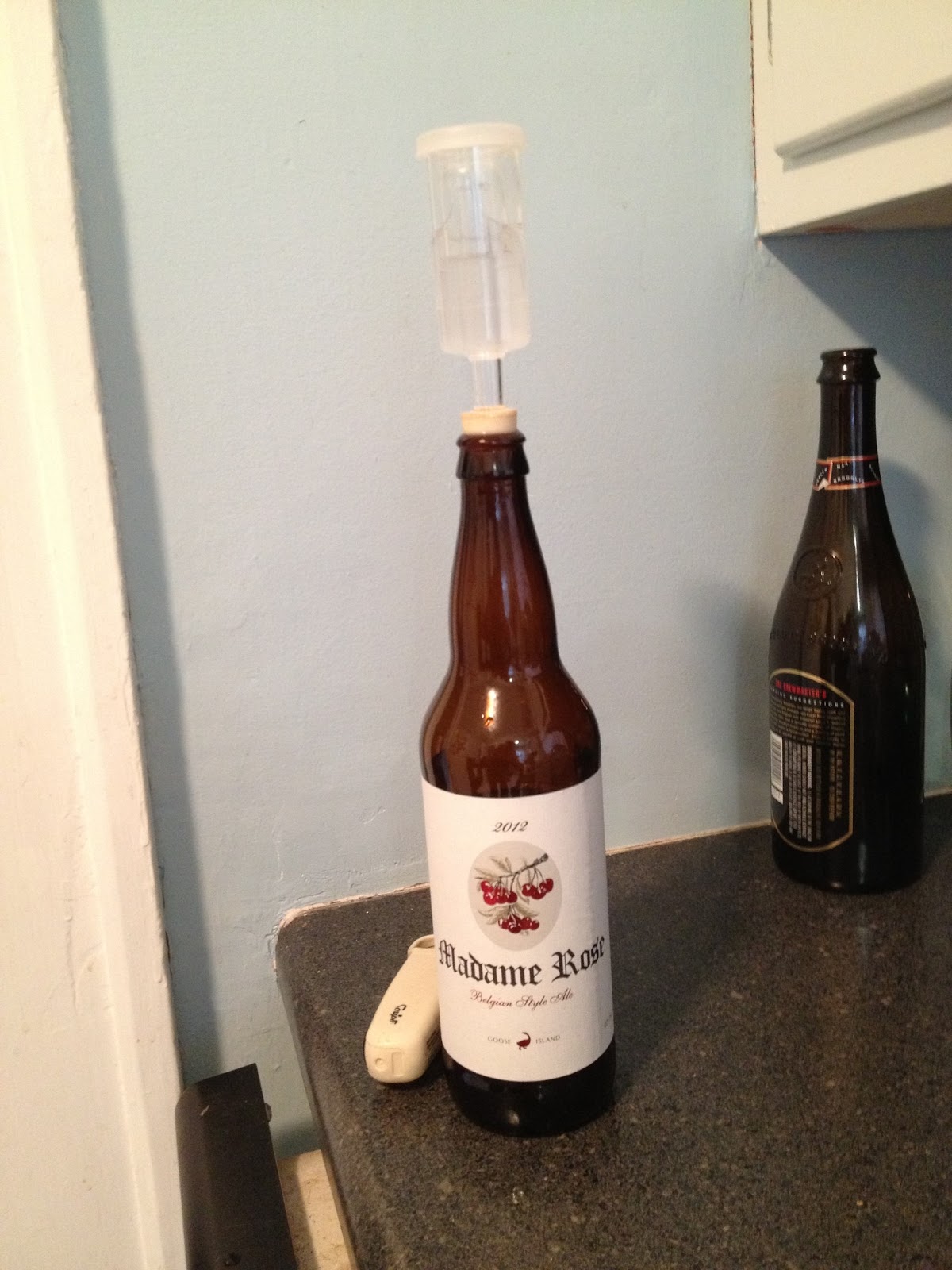Between drinking a great, unpasteurized funky beer and pitching its dregs, I like to take the time to build up the microbes into their own little mixed culture. Whether introducing the dregs into a mixed culture or full batch, initially reviving them in the bottle will increase their rate of survival and contribution to your beer.
This extra bit of work is not really necessary, but I think its worth it for a few reasons:
- It allows me to verify the purity of the resulting culture. I am especially weary of pitching bugs from traditional Flanders beers because of their levels of Acetobacter. Just as well, the dregs from any bottle that has a higher-than-normal acetic character can be evaluated for acetic acid production. This goes for any off flavors or aromas that may have been perceived in the beer.
- It allows me to verify the quality of the resulting culture. Is the beer in fact a living product? If so, is anything still alive? Are the surviving organisms' flavor contributions pleasant?
- Any unwanted Saccharomyces strains can be (mostly) discarded with a few initial steps in the bottle. In younger bottles, the bottle conditioning strain can often out-compete other organisms in a fresh culture.
- I can split the resulting slurry, adding some to the mixed culture and reserving some to pitch at a bottling or into a keg.
- I can make the rare or expensive dregs count!
The procedure is fairly simple:
- Open the bottle and clean off any dirt, cork, or residual beer. Sanitize the lip with vodka (or grain alcohol). Pour & enjoy beer (leave dregs behind).
- If you don't have some sanitary wort handy (or are in a group setting), you can cover the bottle with sanitized aluminum foil and store in the fridge. You should be able to get away with this without any ill-effects until the weekend.
- Add ½” of starter wort to the bottle (or enough to cover the bulb on a 750).
- Affix a stopper/airlock. The stopper/airlock is key in keeping out oxygen and insects.
- Wait for activity to slow/stop. Evaluate sample (smell and taste).
- Repeat this process until the dregs display signs of normal, healthy, active fermentation.
- Pitch into mixed culture or full batch when active.
- If an unwanted Saccharomyces strain is present in the culture, allow it to flocculate and pitch some of the supernatant liquid without the slurry.
- Waiting for a pellicle to form will allow you to evaluate the flavor contributions from the Brettanomyces species in the culture. It will also aid the transfer of Brettanomyces to a nutrient-poor environment (like a batch of conditioning beer or an advanced mixed culture).
Cheers!


No comments:
Post a Comment